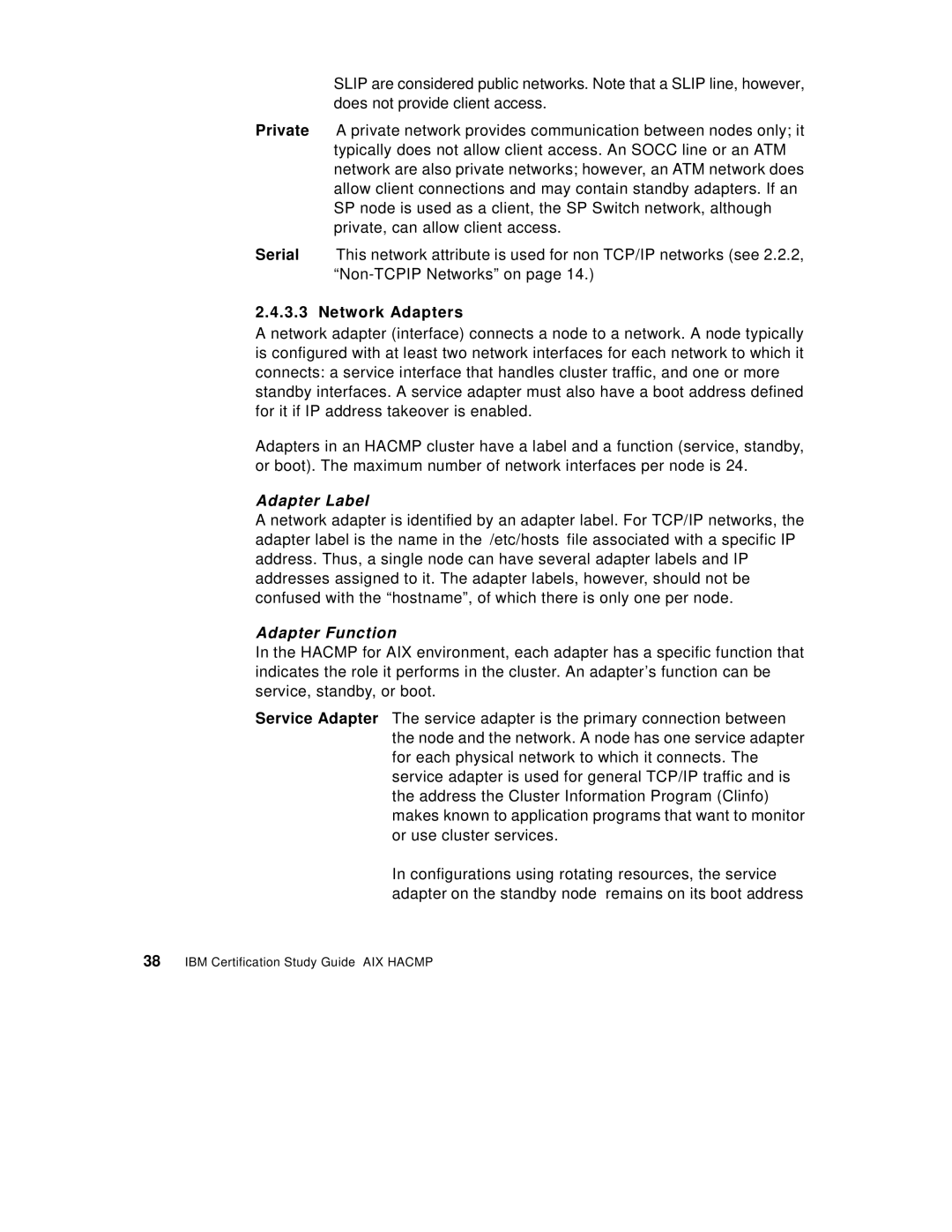SLIP are considered public networks. Note that a SLIP line, however, does not provide client access.
Private A private network provides communication between nodes only; it typically does not allow client access. An SOCC line or an ATM network are also private networks; however, an ATM network does allow client connections and may contain standby adapters. If an SP node is used as a client, the SP Switch network, although private, can allow client access.
Serial This network attribute is used for non TCP/IP networks (see 2.2.2,
2.4.3.3 Network Adapters
A network adapter (interface) connects a node to a network. A node typically is configured with at least two network interfaces for each network to which it connects: a service interface that handles cluster traffic, and one or more standby interfaces. A service adapter must also have a boot address defined for it if IP address takeover is enabled.
Adapters in an HACMP cluster have a label and a function (service, standby, or boot). The maximum number of network interfaces per node is 24.
Adapter Label
A network adapter is identified by an adapter label. For TCP/IP networks, the adapter label is the name in the /etc/hosts file associated with a specific IP address. Thus, a single node can have several adapter labels and IP addresses assigned to it. The adapter labels, however, should not be confused with the “hostname”, of which there is only one per node.
Adapter Function
In the HACMP for AIX environment, each adapter has a specific function that indicates the role it performs in the cluster. An adapter’s function can be service, standby, or boot.
Service Adapter The service adapter is the primary connection between the node and the network. A node has one service adapter for each physical network to which it connects. The service adapter is used for general TCP/IP traffic and is the address the Cluster Information Program (Clinfo) makes known to application programs that want to monitor or use cluster services.
In configurations using rotating resources, the service adapter on the standby node remains on its boot address
